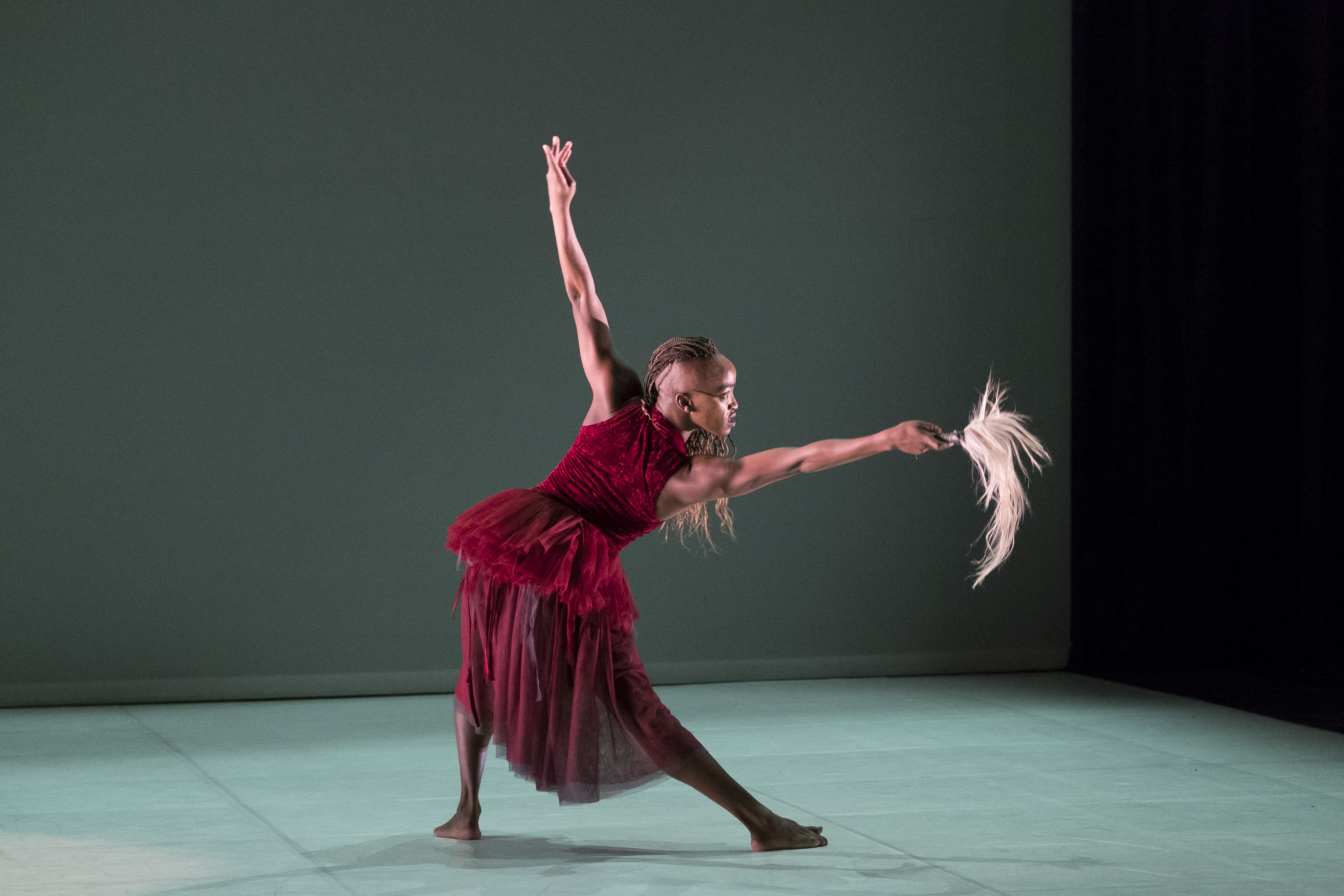Words by Bengi-Sue Sirin. Performed 04/10/19 Sadler’s Wells, London.
“Not everyone is going to like what I do with the classics… If they did, that would be a problem in itself.” True to her statement, Dada Masilo is anything but meek. Researching the 35-year-old South African choreographer and dancer, I come across adjectives like ‘exhilarating’, ‘bold’, ‘brazen’ and ‘fearless.’ To rework Giselle, dubbed the Hamlet of ballet, you have to be all of those things. Adapting an 1841 romantic ballet takes nerve, especially when it’s one which continues to be cherished for its dizzying display of feminine despair despite the strides made by feminism in the twentieth century. Masilo’s Giselle enacts those strides. Her heroine is an Angela Carter-esque feminist, who recasts the jilt-grief as revenge, making it very clear that Albrecht (her cheating tormenter) is certainly not ‘to be’, and there is no question.
Many of the piece’s material elements reappropriate the classical Giselle. In all of its restagings, a key signifier of Giselle’s descent into madness is the unravelling of her ballet bun. Masilo herself dances the title role and defies this convention with her trademark shaven head. The hair-reappropriation does not end there; in the post-show talk, Masilo explained that she requested the Wilis dancers amplify their regular hairstyles into half-up ballet buns with half-down braids, adding height and ferocity to what is normally a grandparent-friendly low bun. Their costumes, too, are given a touch of Masilo-modernity. Breaking tradition with the white, romantic tutu that is particular to Giselle, Masilo’s Wilis wear blood red halterneck dresses with a sassy half-tutu at the rear. These Wilis are not the ‘weeping’ kind…
As well as establishing a sense of empowerment in her characters, Masilo incorporates a range of African elements in the piece. The style of dance in Giselle cannot be categorized as solely contemporary or balletic. I perceive it as a strong-willed hybrid of the two, embellished by nuances of African stamping and dynamic shape-making. It is unbelievably fast. Dada’s body follows timing unique to no style but her own, I can hardly count how many times she spins in one go. Another stand-out dancer is Llewellyn Mnguni, dazzling (and gender-bending) in the role of Myrtha, the Queen of the Wilis. The programme tells us he portrays a traditional South African healer called a Sangoma, and in the performance it is clear to see his leader status. Mnguni carries a furry whip in pursuit of cheating lovers like Albrecht; despite spinning in speedy circles in his hand, it cannot keep up with the pace of its holder. His body’s unreal command of dynamism, elevation and extension endow Myrtha with an intensity that she lacks in the classical Giselle.

Another vehicle for Masilo’s feminist revamp is the staging. She is fond of a V formation, using it to enclose or shut out Albrecht and Hilarion, rather than to showcase the classical lines of the Wilis a lá Petipa (the ballet’s most cited choreographer). When Giselle dies, her grief-stricken, desperate solo withers her body down to the foetal position on the floor. We see the people she was dancing with earlier (friends, family, neighbours) passively passing her, their bodies and faces expressing sorrow for her fortune but offering no actual support. The last passer-by scoops Giselle into his arms and removes her from the stage, like he is clearing up a spillage. This is the way we, as a hypothetical classical ballet audience, participate in Giselle; we feel very, very sorry for her, but accept that being wronged with no hope of justice is her lot. Enter, Dada Masilo! When Albrecht dies at the end of the piece, his body spillage is merely left on the floor. A few burial rites are disdainfully sprinkled over him, but ultimately he is walked over by the Wilis, left for dead. I found this parallel provided closure, fulfilment, dramatic justice.
I have focused on the Wilis in this review because they are the most compelling aspect of the show. Parts of Act 1 drag a little, it is unclear what the narrative purpose is of certain group dances. However, I found those moments totally worth waiting through as soon as Act 2 began. Masilo’s Giselle injects fierce, hot and raging blood into the beautiful (but pallid) corpse of the classical ballet version, and that blood is made up of the Wilis. Make no mistake, Masilo is grateful to the 1841 choreography for its starting point, and to ballet for its form. She sharply quips that ‘If you want to break the rules, you have to know what they are!’ That is exactly what her Giselle celebrates: the breaking of convention, the feminist rebranding of classics. Forget Shakespeare and Hamlet; I know that Angela Carter would have been delighted by Dada Masilo’s creation.
Dada Masilo’s Giselle tour is supported by Dance Consortium